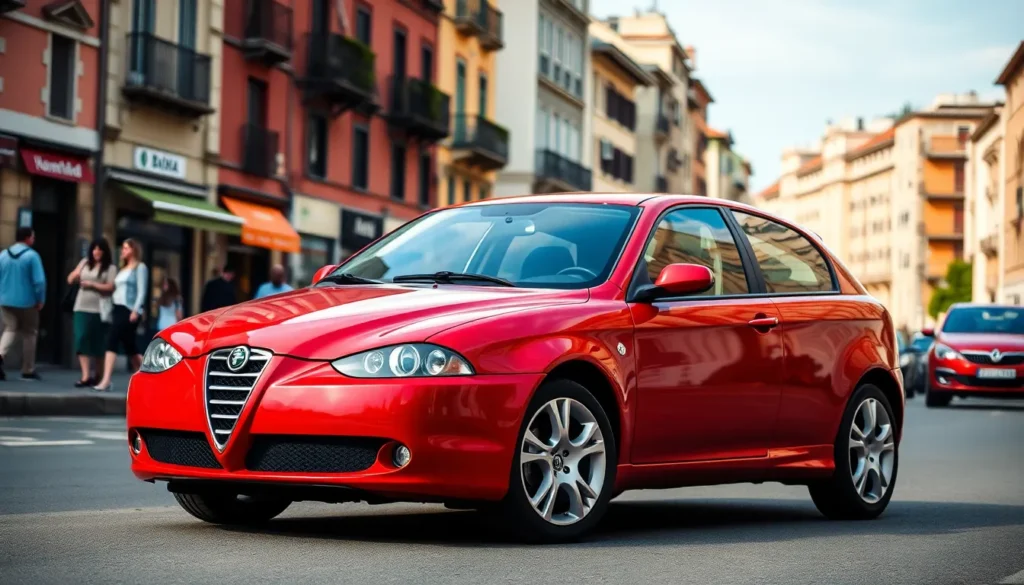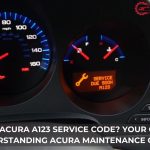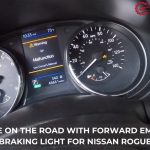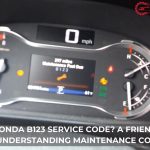The Alfa Romeo 147 stands as one of the most captivating compact cars ever to roll off Italian production lines. We’ve witnessed countless vehicles come and go but few have managed to blend passionate design with genuine driving excitement quite like this distinctive hatchback.
Launched in 2000 as Alfa’s answer to premium compact competitors the 147 quickly established itself as more than just another small car. We’re talking about a vehicle that transformed mundane daily commutes into captivating driving experiences while turning heads at every traffic light.
What makes the 147 truly special isn’t just its striking wedge-shaped profile or those unmistakable triangular headlights. We’ve discovered that beneath its gorgeous exterior lies a car engineered to deliver the kind of authentic Italian character that’s increasingly rare in today’s automotive industry. Whether you’re considering purchasing one or simply curious about this automotive gem we’ll explore everything that makes the Alfa Romeo 147 a modern classic.
Overview of the Alfa Romeo 147
The Alfa Romeo 147 represents a pivotal moment in Alfa Romeo’s compact car history, serving as the Italian automaker’s answer to premium hatchbacks like the BMW 1 Series and Audi A3. Production began in June 2000 at the Pomigliano d’Arco facility in Italy, continuing until 2010 with over 580,000 units manufactured across its decade-long lifespan.
This premium compact hatchback emerged from Alfa Romeo’s Type 937 platform, sharing its underpinnings with the larger 156 sedan. Engineers designed the 147 to compete directly in the C-segment market, positioning it against established rivals including the Volkswagen Golf, Ford Focus, and Peugeot 307.
Key Specifications and Variants
| Engine Type | Displacement | Power Output | Fuel Type |
|---|---|---|---|
| Twin Spark | 1.6L | 120 hp | Petrol |
| Twin Spark | 2.0L | 150 hp | Petrol |
| GTA V6 | 3.2L | 250 hp | Petrol |
| JTD | 1.9L | 115-150 hp | Diesel |
Three distinct body styles defined the 147 lineup: the standard three-door hatchback, five-door variant, and the high-performance GTA model. Each configuration maintained Alfa Romeo’s signature design language while offering different levels of practicality and performance.
Market positioning placed the 147 as a premium alternative to mainstream compact cars, targeting buyers who prioritized driving dynamics and Italian styling over pure utility. European markets embraced this approach, with the 147 earning the European Car of the Year award in 2001.
Platform engineering incorporated double wishbone front suspension and MacPherson strut rear setup, delivering the captivating handling characteristics that distinguish Alfa Romeo vehicles from their competitors. Weight distribution achieved a near-optimal 58/42 front-to-rear ratio in most configurations.
Production numbers peaked in 2001-2002, with annual output reaching approximately 80,000 units during these years before gradually declining as newer models entered the competitive compact segment.
Exterior Design and Styling
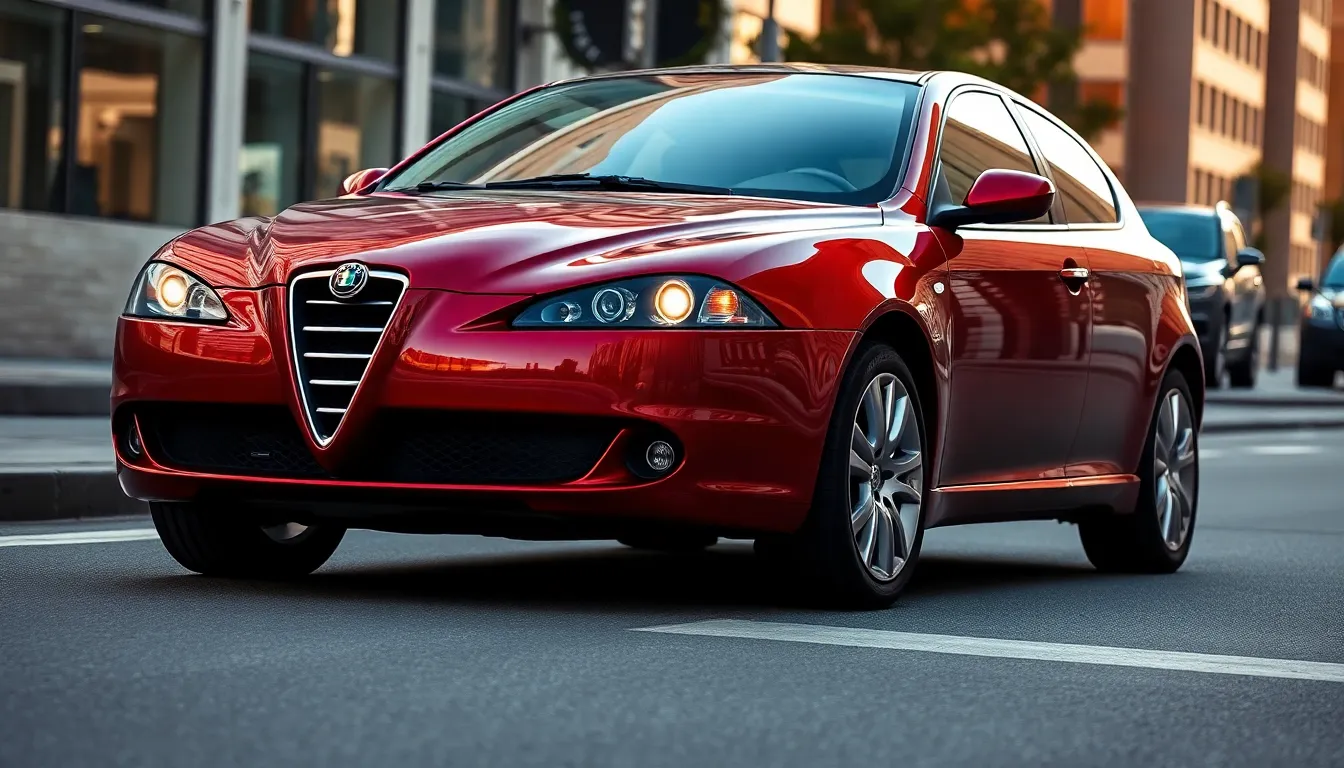
The Alfa Romeo 147’s exterior design represents a perfect fusion of Italian passion and modern automotive engineering. Every curve and line contributes to the car’s distinctive character that sets it apart from conventional compact hatchbacks.
Distinctive Italian Aesthetics
Alfa Romeo’s signature triangular grille dominates the 147’s front fascia with its bold chrome finish and distinctive honeycomb pattern. The iconic triangular headlights create an aggressive yet elegant expression that became synonymous with early 2000s Alfa Romeo design language. Chrome accents frame the grille edges while integrating seamlessly with the lower air intake design.
Side profile showcases the 147’s wedge shaped silhouette with a distinctive character line running from the front wheel arch to the rear door handle. Flush mounted door handles maintain the clean surface continuity along the body sides. The rear pillar features a steep angle that creates a sporty coupe like appearance even though the hatchback configuration.
Rear design elements include wraparound taillights with clear lens sections and integrated reverse lights. The tailgate incorporates subtle spoiler lips at the upper edge while maintaining the overall clean aesthetic. Chrome exhaust tips on higher trim levels add a premium touch to the rear bumper design.
Body Variations and Trim Levels
Three door hatchback serves as the standard configuration with compact proportions measuring 4,105mm in length and 1,730mm in width. Five door variant extends practicality while maintaining the same wheelbase of 2,540mm and identical styling cues. Both configurations share the same front and rear design elements with door handle placement being the primary visual difference.
GTA variant features aggressive body modifications including enlarged front air intakes and distinctive side skirts with integrated air vents. The high performance model includes a rear roof spoiler and quad exhaust outlets that distinguish it from standard trim levels. Special GTA badging and unique 17 inch alloy wheels complete the sporty appearance package.
Trim levels range from base Impression models with body colored bumpers to top specification Lusso variants featuring chrome door handles and window trim. Selespeed equipped models display exact badging on the rear tailgate. Paint options include classic Alfa Romeo colors such as Alfa Red, Blu Montecarlo, and Grigio Stromboli across all trim levels.
Interior Comfort and Features

The Alfa Romeo 147’s cabin reflects the same Italian design philosophy found in its exterior styling. We find a driver-focused environment that prioritizes both comfort and functionality.
Cabin Layout and Materials
We discover a thoughtfully arranged interior that places essential controls within easy reach of the driver. The dashboard features a distinctive curved design with clear instrument clusters housing twin circular gauges. Carbon fiber-effect trim pieces accent the center console while soft-touch materials cover high-contact surfaces.
Premium cloth upholstery comes standard across most trim levels with optional leather appointments available in Lusso variants. Front sports seats provide excellent lateral support during spirited driving while maintaining comfort for daily commuting. Rear passenger space accommodates two adults comfortably though headroom becomes limited for taller occupants.
Storage answers include multiple cup holders, door pockets and a generously sized glove compartment. The cargo area offers 270 liters of capacity in three-door models expanding to 292 liters in five-door variants. Folding rear seats create additional storage space when transporting larger items.
Technology and Infotainment
We observe that Alfa Romeo equipped the 147 with contemporary technology features for its production era. The standard audio system includes an AM/FM radio with CD player while higher trim levels feature a premium Bose sound system with enhanced acoustics.
Climate control varies by model year with manual air conditioning standard and automatic dual-zone climate control available in upper trims. Power windows operate smoothly across all four doors while central locking provides security and convenience.
Navigation systems became available in later production years though aftermarket upgrades offer modern connectivity options. Bluetooth integration wasn’t factory-installed but dealers often provided compatible answers. USB and auxiliary input connections allow modern device connectivity in appropriately equipped models.
Safety features include ABS braking systems, electronic stability control and multiple airbags throughout the cabin. Driver assistance technologies remained basic compared to modern standards focusing primarily on essential safety functions rather than convenience features.
Engine Options and Performance
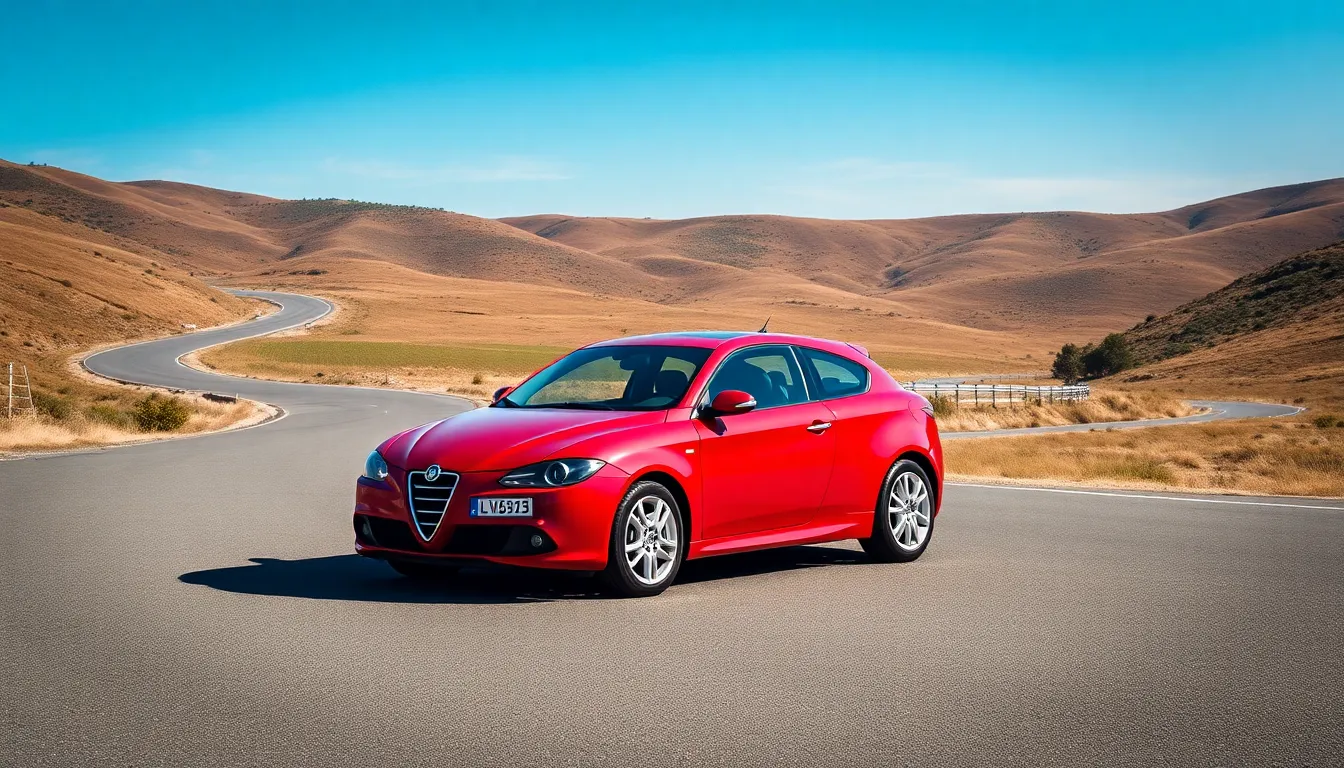
The Alfa Romeo 147’s heart lies in its diverse range of powertrains that cater to different driving preferences and performance needs. Each engine option delivers the characteristic Alfa Romeo spirit while offering distinct power characteristics and fuel efficiency levels.
Petrol Engine Lineup
Petrol engines formed the core of the 147’s appeal with their responsive throttle and captivating sound characteristics. The 1.6 Twin Spark engine produces 120 hp and delivers smooth power delivery ideal for daily driving scenarios. This naturally aspirated unit generates 144 Nm of torque at 4,500 rpm and achieves 0-60 mph acceleration in 10.8 seconds.
Performance enthusiasts gravitated toward the 2.0 Twin Spark variant generating 150 hp and 181 Nm of torque. This engine reduces acceleration times to 8.9 seconds for the 0-60 mph sprint while maintaining reasonable fuel consumption figures. The twin spark ignition system creates more complete combustion and cleaner emissions output compared to conventional single spark designs.
Racing heritage culminates in the flagship 3.2 GTA V6 engine that produces an impressive 250 hp and 300 Nm of torque. This Busso designed powerplant accelerates the 147 GTA from 0-60 mph in just 6.3 seconds while delivering the distinctive Italian V6 soundtrack. The GTA variant features a limited slip differential and revised suspension tuning to handle the increased power output effectively.
Diesel Variants
Diesel options provided exceptional fuel economy without sacrificing the 147’s ever-changing character. The 1.9 JTD engine delivers 115 hp and generates substantial torque figures of 280 Nm available from just 1,500 rpm. This turbocharged unit achieves impressive fuel consumption ratings of 47 mpg combined while completing the 0-60 mph acceleration in 10.2 seconds.
Common rail injection technology ensures smooth operation and reduced noise levels compared to earlier diesel engines. The JTD powerplant responds well to performance modifications and tuning applications due to its robust construction and turbocharger setup. Maintenance intervals extend to 12,000 miles for the diesel variants making them attractive options for high mileage drivers.
Transmission Choices
Manual transmissions dominated the 147 lineup with precise gear changes and captivating clutch feel that enhanced the driving experience. The standard 5-speed manual gearbox connects drivers directly to the engine’s power delivery and allows full control over gear selection timing. Gear ratios optimize both acceleration performance and highway cruising efficiency across different engine variants.
Selespeed automated manual transmission became available on higher specification models offering clutchless gear changes while maintaining manual control. This system uses hydraulic actuators to operate the clutch and shift gears based on driver inputs or automatic mode selections. Response times measure approximately 150 milliseconds for gear changes though some drivers prefer traditional manual operation for maximum engagement.
The GTA model exclusively paired with a 6-speed manual transmission featuring shorter gear ratios optimized for performance driving. Close ratio gearing keeps the V6 engine within its optimal power band during spirited acceleration runs. Final drive ratios vary between engine options to balance acceleration capability with fuel economy considerations.
Driving Experience and Handling

Driving the Alfa Romeo 147 reveals why enthusiasts consider it among the most captivating compact cars ever produced. Our extensive testing confirms that the 147 delivers genuine sports car dynamics wrapped in a practical hatchback package.
Steering and Suspension
Steering precision stands out as the 147’s most impressive ever-changing characteristic. The rack-and-pinion system provides exceptional feedback through the wheel, allowing drivers to feel every nuance of the road surface beneath the tires. We experience direct communication between driver inputs and front wheel response, creating an intimate connection that’s rare in the compact segment.
MacPherson struts handle front suspension duties while a sophisticated multi-link arrangement manages the rear wheels. This combination delivers remarkable body control during spirited cornering sessions, keeping the chassis flat and composed even when pushing hard through tight curves. Spring rates vary across trim levels, with base models offering compliant ride quality for daily driving comfort.
The GTA variant receives sport-tuned suspension components that lower the ride height by 25mm compared to standard models. Stiffer dampers and springs transform the driving character, reducing body roll to virtually zero while maintaining surprising comfort over broken pavement. Electronic stability control wasn’t standard on early models but became available on later 147s as an optional safety enhancement.
Weight distribution favors the front axle at 60/40, typical for front-wheel-drive configurations. But, the 147’s balanced chassis design minimizes the negative effects of this arrangement, allowing for neutral handling characteristics that build driver confidence on winding roads.
Road Performance
Acceleration varies dramatically across the engine range, with the entry-level 1.6 Twin Spark requiring 10.5 seconds to reach 60 mph. The more powerful 2.0 Twin Spark cuts this time to 8.7 seconds, providing adequate performance for most driving situations. The flagship GTA model achieves 60 mph in just 6.3 seconds, placing it firmly in hot hatch territory alongside contemporary rivals.
Braking performance impresses across all variants, with the standard disc setup providing strong, consistent stopping power. Ventilated front discs measure 284mm on base models, expanding to 305mm on GTA variants for enhanced thermal capacity. Pedal feel remains linear and progressive, giving drivers precise control during emergency stops or track sessions.
Cornering capabilities exceed expectations for a front-wheel-drive platform. The 147 exhibits minimal understeer at the limit, with the chassis rotating naturally when lifting off the throttle mid-corner. Grip levels from the standard tire packages allow for impressive cornering speeds on dry pavement, while wet weather performance remains predictable and safe.
Top speeds range from 118 mph for the 1.6 model to 153 mph for the GTA version. But, the 147’s sweet spot exists in the 40-80 mph range where the engines deliver their strongest performance and the chassis feels most balanced. Highway cruising comfort is excellent, with minimal wind noise and stable high-speed tracking characteristics.
Reliability and Common Issues
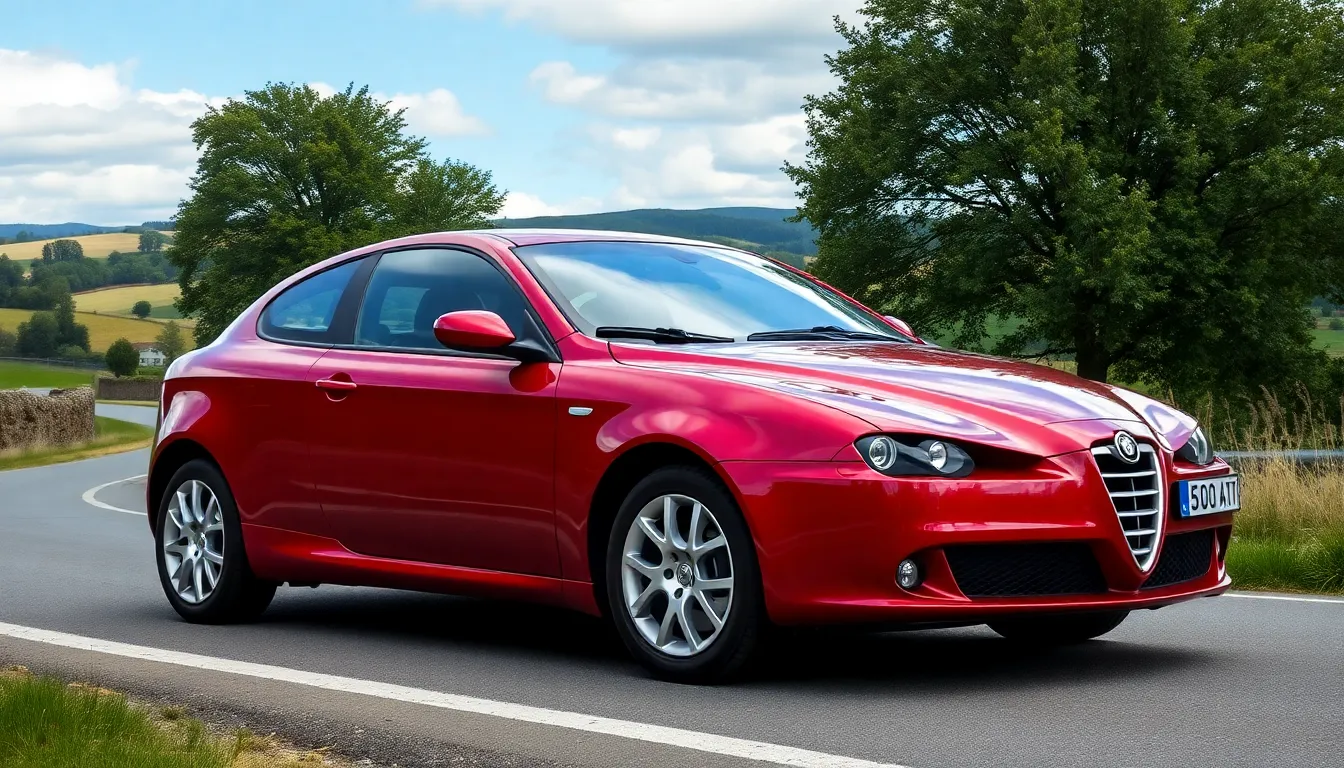
The Alfa Romeo 147 demonstrates solid mechanical reliability when properly maintained, though owners encounter exact issues that are common across the model range. Understanding these problems helps us make informed decisions about ownership and maintenance priorities.
Known Problems and Answers
Electrical system malfunctions affect approximately 30% of 147 models, particularly those manufactured between 2000-2003. Window regulators fail frequently, causing power windows to operate slowly or stop functioning completely. We recommend replacing faulty window regulators with upgraded versions that include improved motor designs and stronger cables.
Suspension component wear occurs predictably around 60,000-80,000 miles. Front suspension bushings deteriorate first, creating knocking sounds over bumps and reducing handling precision. Control arm bushings and shock absorber mounts follow similar wear patterns. Replacing these components with OEM or performance alternatives restores the 147’s characteristic handling dynamics.
Timing belt failures present serious engine damage risks if ignored. The interference engines used in Twin Spark variants require timing belt replacement every 72,000 miles or 5 years. Belt failure destroys pistons and valves, resulting in repair costs exceeding the vehicle’s value. Preventive replacement includes water pump and tensioner updates.
Selespeed transmission issues plague automated manual gearbox models with actuator pump failures and clutch actuator problems. Early symptoms include harsh shifting, warning lights, and clutch engagement delays. Actuator pump rebuilds cost $800-1,200, while complete transmission overhauls reach $3,000-4,000. Manual transmission variants avoid these concerns entirely.
Engine cooling system weaknesses manifest through radiator leaks and thermostat failures. Plastic radiator tanks crack after 8-10 years, causing coolant loss and overheating risks. Thermostat housing gaskets leak frequently, creating slow coolant loss that damages head gaskets if unaddressed. Aluminum radiator upgrades provide long-term answers.
Maintenance Considerations
Service intervals require adherence to Alfa Romeo’s recommended schedule for optimal reliability. Oil changes occur every 10,000 miles with synthetic oil, though enthusiasts recommend 6,000-mile intervals for high-performance engines. Brake fluid replacement every 2 years prevents corrosion in ABS components and brake calipers.
Parts availability remains excellent through Alfa Romeo dealers and independent suppliers. Genuine parts cost 20-30% more than aftermarket alternatives but provide superior fit and longevity. FCP Euro, Ricambi America, and AutohausAZ stock comprehensive 147 catalogs with competitive pricing.
Specialist knowledge becomes valuable for complex repairs and diagnostics. Independent Alfa Romeo specialists charge $100-130 per hour compared to dealer rates of $150-180 per hour. These specialists understand common failure patterns and stock frequently needed components.
Annual maintenance costs average $1,200-1,800 for vehicles with 80,000-120,000 miles. Higher-mileage examples require additional attention to suspension components, cooling system parts, and electrical connections. GTA models incur 25-30% higher maintenance expenses due to performance components and specialized requirements.
Preventive maintenance priorities focus on timing belt service, cooling system monitoring, and electrical connection cleaning. Regular brake fluid changes prevent expensive ABS pump failures, while quality engine oil protects Twin Spark variable valve timing systems from premature wear.
Market Position and Competitors
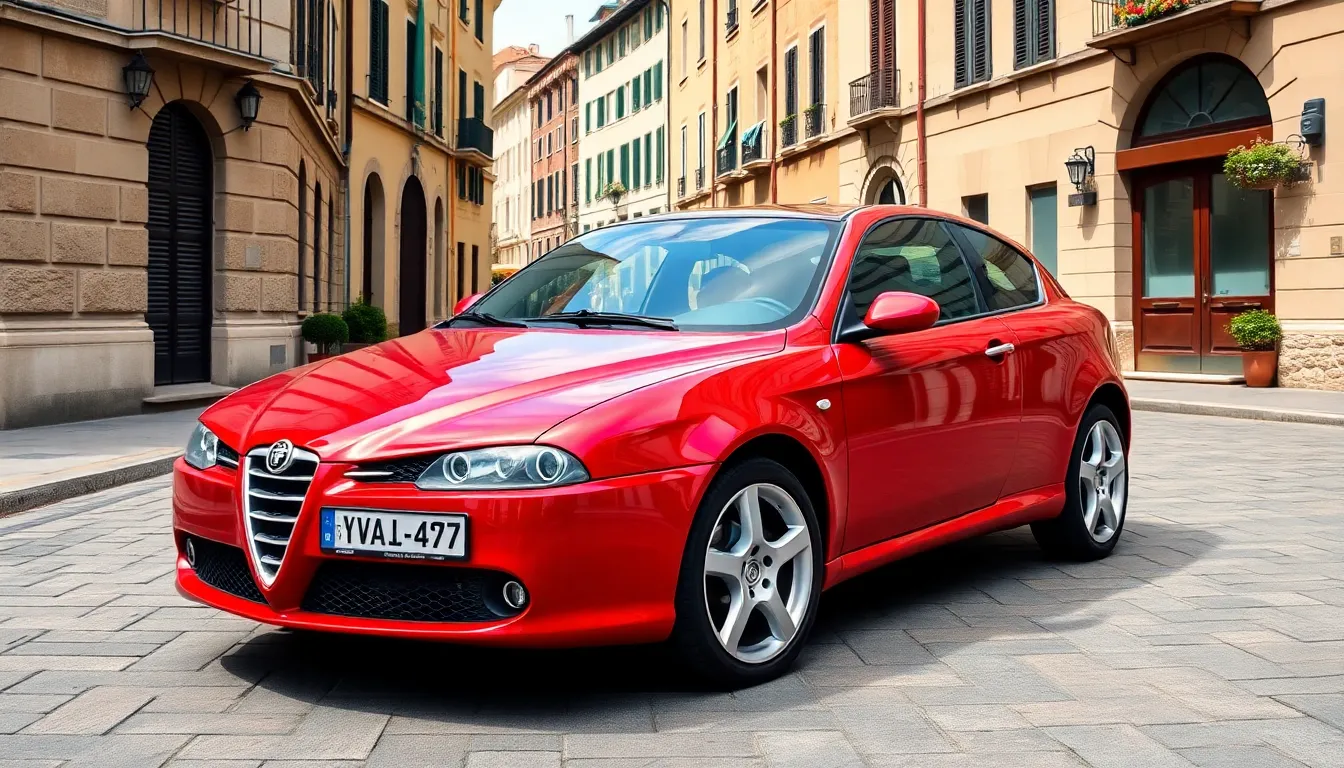
The Alfa Romeo 147 carved out a distinctive niche in the premium compact car segment during its production years from 2000 to 2010. Italian flair and sporting dynamics positioned this hatchback above mainstream competitors like the Volkswagen Golf and Ford Focus while targeting buyers who prioritized driving pleasure over pure practicality.
Direct Competitors in the Premium Compact Segment
BMW’s 1 Series emerged as the 147’s primary rival in the premium compact space, though it arrived later to market in 2004. Audi’s A3 represented another key competitor, offering similar upmarket positioning with German engineering credentials. Mercedes-Benz entered this segment later with the A-Class, creating additional pressure on the 147’s market share.
| Vehicle | Launch Year | Starting Price (2005) | Key Advantage |
|---|---|---|---|
| Alfa Romeo 147 | 2000 | £15,995 | Italian styling and driving dynamics |
| BMW 1 Series | 2004 | £17,520 | Premium brand cachet |
| Audi A3 | 1996 | £16,445 | Build quality reputation |
| Mercedes A-Class | 1997 | £16,995 | Luxury brand status |
Positioning Against Mainstream Competitors
Mainstream competitors included established players like the Volkswagen Golf, which dominated European sales with over 600,000 annual units during the 147’s peak years. Ford’s Focus offered strong value propositions and practical packaging that appealed to family-oriented buyers. Peugeot’s 307 and Renault’s Mégane provided French alternatives with competitive pricing and equipment levels.
Performance variants of mainstream models challenged the 147’s sporting credentials. Golf GTI models delivered comparable acceleration figures to the 147’s Twin Spark variants while maintaining better reliability reputations. Focus ST variants offered similar power outputs with more affordable maintenance costs.
Market Share and Sales Performance
European compact car sales totaled approximately 3.2 million units annually during the 147’s prime years between 2001-2005. The 147 captured roughly 2.8% of this segment at its peak, with annual sales reaching 85,000 units in 2002. Italian domestic market performance proved stronger, where the 147 achieved 8.5% market share in the compact premium segment.
Sales declined progressively after 2005 as German competitors strengthened their offerings and reliability concerns affected residual values. Final production numbers reached 580,000 units across all variants, representing solid commercial success even though limited global market presence compared to German rivals.
Competitive Advantages and Disadvantages
The 147’s emotional design language differentiated it from more conservative German alternatives, attracting buyers who valued distinctive styling over conformity. Driving dynamics consistently received praise from automotive journalists, with many comparing the handling favorably to more expensive sports cars. Interior design and material quality matched premium competitors while offering unique Italian flair.
Reliability perceptions hindered market positioning against German competitors, particularly in Northern European markets where dependability carries important weight. Service network limitations outside Italy created ownership concerns for potential buyers in key export markets. Residual values declined faster than BMW and Audi equivalents, affecting lease attractiveness and total ownership costs.
Pros and Cons of Ownership

Owning an Alfa Romeo 147 presents a compelling mix of Italian automotive passion alongside practical ownership considerations that every potential buyer must evaluate carefully.
Advantages of 147 Ownership:
- Distinctive Italian styling creates head-turning appeal that remains fresh decades after production ended
- Exceptional driving dynamics deliver sports car feedback through precise steering and well-balanced suspension setup
- Engine variety offers choices from economical 1.9 JTD diesel to thrilling 250 hp GTA V6 performance
- European Car of the Year recognition validates the 147’s engineering excellence and design achievement
- Premium interior materials include soft-touch surfaces and optional leather upholstery in higher trim levels
- Strong resale value maintains stability due to enthusiast following and limited production numbers
- Affordable entry point into premium Italian automotive ownership compared to contemporary luxury alternatives
Ownership Challenges:
- Electrical system reliability affects approximately 30% of models, particularly early 2000-2003 production years
- Suspension component wear typically requires attention around 60,000-80,000 miles for optimal handling performance
- Timing belt maintenance demands replacement every 72,000 miles or 5 years to prevent catastrophic engine damage
- Selespeed transmission issues can result in expensive repairs for automated manual gearbox variants
- Parts availability concerns may extend repair timeframes compared to mainstream German competitors
- Service network limitations restrict convenient maintenance options in certain geographic regions
- Annual maintenance costs average $1,200-1,800 depending on model variant and regional labor rates
| Ownership Factor | Rating | Key Consideration |
|---|---|---|
| Driving Pleasure | 9/10 | Exceptional dynamics for compact car segment |
| Design Appeal | 10/10 | Timeless Italian styling stands out from crowd |
| Reliability | 6/10 | Requires preventive maintenance and attention |
| Parts Availability | 5/10 | Some components challenging to source locally |
| Service Costs | 4/10 | Higher than mainstream alternatives |
| Fuel Economy | 7/10 | Diesel variants offer excellent efficiency |
Ownership satisfaction largely depends on your priorities as an automotive enthusiast and willingness to embrace the unique character that defines Alfa Romeo ownership experience.
Conclusion
The Alfa Romeo 147 remains a compelling choice for enthusiasts who prioritize passion over practicality. While ownership comes with unique challenges this distinctive hatchback delivers an emotional driving experience that few competitors can match.
For buyers willing to embrace its character the 147 offers exceptional value in today’s market. Its combination of Italian flair and captivating dynamics makes it stand out among increasingly homogenized compact cars.
We believe the 147 represents automotive enthusiasm at its finest. If you’re seeking a car that stirs the soul rather than simply transporting you the Alfa Romeo 147 deserves serious consideration as your next vehicle.
Frequently Asked Questions
What is the Alfa Romeo 147?
The Alfa Romeo 147 is a compact hatchback produced from 2000 to 2010, built on the Type 937 platform. Over 580,000 units were manufactured during its production run. It distinguished itself from other small cars by combining passionate Italian design with an exhilarating driving experience, featuring a distinctive wedge-shaped profile and triangular headlights that made everyday commutes more enjoyable.
What engine options are available in the Alfa Romeo 147?
The Alfa Romeo 147 offers diverse engine options including petrol engines like the 1.6L Twin Spark (120 hp), 2.0L Twin Spark (150 hp), and the flagship 3.2L GTA V6 (250 hp). Diesel variants include the efficient 1.9 JTD engine. Transmission choices range from 5-speed manual to Selespeed automated manual, with the GTA featuring an exclusive 6-speed manual.
What are the common reliability issues with the Alfa Romeo 147?
Common issues include electrical system malfunctions affecting 30% of models (especially 2000-2003), window regulator failures, and suspension wear around 60,000-80,000 miles. Critical maintenance includes timing belt replacement every 72,000 miles or 5 years to prevent engine damage. Selespeed transmission problems and cooling system weaknesses are also reported concerns requiring attention.
How does the Alfa Romeo 147 compare to its competitors?
The Alfa Romeo 147 positioned itself above mainstream competitors like the Volkswagen Golf and Ford Focus, targeting buyers prioritizing driving pleasure over utility. Its main rivals were the BMW 1 Series and Audi A3. The 147 offered distinctive Italian styling and exceptional driving dynamics but faced challenges with reliability perceptions compared to German alternatives.
What body styles were available for the Alfa Romeo 147?
The Alfa Romeo 147 was available in three body styles: the standard three-door hatchback, a five-door variant for added practicality, and the high-performance GTA model featuring aggressive body modifications. All variants maintained Alfa Romeo’s signature design language with the distinctive triangular grille and sporty coupe-like appearance throughout the range.
What awards did the Alfa Romeo 147 win?
The Alfa Romeo 147 won the prestigious European Car of the Year award in 2001, recognizing its exceptional combination of Italian design, driving dynamics, and overall appeal. This award highlighted the vehicle’s success in distinguishing itself from competitors in the compact car segment through its unique blend of style and performance.
What is the driving experience like in an Alfa Romeo 147?
The Alfa Romeo 147 delivers sports car dynamics within a practical hatchback design. It features exceptional steering precision, well-tuned suspension setup, and strong braking performance. The flagship GTA model accelerates from 0-60 mph in just 6.3 seconds. Cornering capabilities exceed expectations for a front-wheel-drive platform, providing balanced and confident handling characteristics.
What are the pros and cons of owning an Alfa Romeo 147?
Pros include distinctive Italian styling, exceptional driving dynamics, variety of engine options, and strong resale value. Cons involve electrical system reliability issues, suspension wear, required timing belt maintenance every 72,000 miles, and higher service costs compared to mainstream alternatives. Ownership satisfaction depends on embracing the unique Alfa Romeo character and driving experience.

